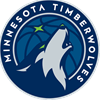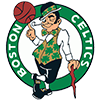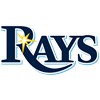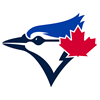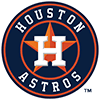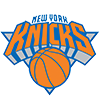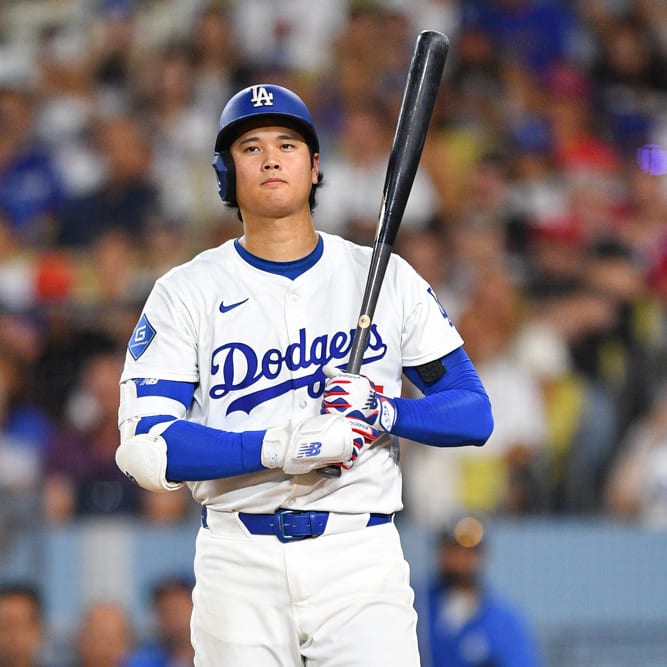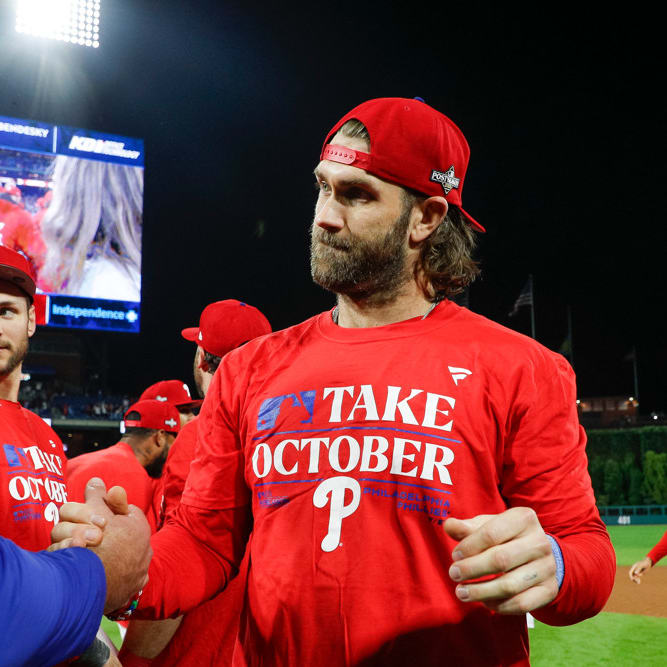Welcome to the Year of the Torpedo!
Every new baseball season seems to feature a new variable these days, whether that's a juiced ball, a crackdown on "sticky stuff" or new rules regarding defense and baserunning. This year's new variable is the torpedo bat, which the Yankees used to demolish Brewers pitching in the opening series.
Of course, it might not have been the bats. It might have been Nestor Cortes, who allowed homers on the first three pitches of the game. But since it's much easier for teams to purchase new bats than it is for them to guarantee that Cortes pitches against them every game, organizations around the league quickly scrambled to stock up on torpedoes.
The idea behind the torpedo bat is simple: why waste weight in the parts of the bat which you shouldn't be hitting the ball with anyway, like the end of the bat? Why not move that weight to the part of the bat you actually want to use? The logic seems undeniable, and given that the bats are evidently legal, the only remaining question is why nobody thought of this earlier.
If I had to guess, the effects of the new bats will be real but minimal, and not universal for each player. Hitters who found themselves getting jammed too often will now find themselves hitting a few more barrels once they get comfortable with the new bat, but hitters who are already very good at getting the barrel on
Welcome to the Year of the Torpedo!
Every new baseball season seems to feature a new variable these days, whether that's a juiced ball, a crackdown on "sticky stuff" or new rules regarding defense and baserunning. This year's new variable is the torpedo bat, which the Yankees used to demolish Brewers pitching in the opening series.
Of course, it might not have been the bats. It might have been Nestor Cortes, who allowed homers on the first three pitches of the game. But since it's much easier for teams to purchase new bats than it is for them to guarantee that Cortes pitches against them every game, organizations around the league quickly scrambled to stock up on torpedoes.
The idea behind the torpedo bat is simple: why waste weight in the parts of the bat which you shouldn't be hitting the ball with anyway, like the end of the bat? Why not move that weight to the part of the bat you actually want to use? The logic seems undeniable, and given that the bats are evidently legal, the only remaining question is why nobody thought of this earlier.
If I had to guess, the effects of the new bats will be real but minimal, and not universal for each player. Hitters who found themselves getting jammed too often will now find themselves hitting a few more barrels once they get comfortable with the new bat, but hitters who are already very good at getting the barrel on the ball might not have much to gain there. It's also possible that adjusting to a new bat causes slumps for some players, whose timing could be ever so slightly thrown off by their new bat's unusual weight distribution.
I'm not sure it's worth placing too much stock in a torpedo tracker at this point in time, especially given that it looks as though tons of batters who weren't using one this week could be using one within the next few days, nor do I think it's a great idea to chase any torpedo-based parlays. But if any of the players known to be using the new bat happens to go off for the first few weeks, the change in equipment could be enough to buy into the new level of performance as something real and not merely a hot streak.
That's enough on the new bats for now, though. While I'm sure we'll have some torpedo-based risers (and maybe even fallers) in future weeks, this week's risers are mostly players who already look to be making good on some draft-season promise. Meanwhile, the outlook for many of this week's fallers looks quite dark, at least for the immediate future.
RISERS
 Cristopher Sanchez, SP, Phillies: Sanchez was one of the biggest risers of draft season, and he did nothing to make his backers look bad in his first start. Through March 7, the day before the first NFBC Main Event draft, Sanchez had an NFBC ADP of 168. He then proceeded to go 112 in the first Main Event and had an ADP of 101 (with a minimum pick of 63) across 57 Main Event leagues.
Cristopher Sanchez, SP, Phillies: Sanchez was one of the biggest risers of draft season, and he did nothing to make his backers look bad in his first start. Through March 7, the day before the first NFBC Main Event draft, Sanchez had an NFBC ADP of 168. He then proceeded to go 112 in the first Main Event and had an ADP of 101 (with a minimum pick of 63) across 57 Main Event leagues.
Don't be surprised if he goes several rounds earlier next season. His numbers since the start of the 2023 season already hold up next to the elite groundball specialists of the game like Framber Valdez, Max Fried and Logan Webb:
All pitchers with a groundball rate above 55% since 2023, min. 250 innings | |||||||
|---|---|---|---|---|---|---|---|
| Name | NFBC ADP | K% | BB% | K-BB% | GB% | ERA | WHIP |
| Framber Valdez | 66 | 24.3% | 7.4% | 16.9% | 57.0% | 3.14 | 1.11 |
| Max Fried | 101 | 23.7% | 7.3% | 16.4% | 58.4% | 3.05 | 1.17 |
| Logan Webb | 103 | 21.7% | 4.8% | 16.9% | 59.4% | 3.35 | 1.15 |
| Cristopher Sanchez | 168 | 21.8% | 5.3% | 16.6% | 57.0% | 3.33 | 1.17 |
Sanchez doesn't quite miss as many bats as Valdez or Fried, but he makes up for it by having even better control. And it's not hard to see him increasing his strikeout rate this year, as he added two mph to his sinker in his season debut against the Rockies, helping him strike out seven in 5.1 innings. One question remains open: the new cutter he was working on this spring did not make an appearance in his first start. Has that been shelved, or will he break it out soon and see his stock climb to yet another new level?
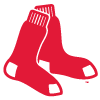 Kristian Campbell, 2B, Red Sox: Campbell signed an extension worth a guaranteed $60 million Wednesday, with a pair of club options which could see the total reach $100 million. He signed the deal after having played just five major-league games, but the public reaction was already that he may have been underpaid. While I'm not going to knock a young man for setting up his family for generations just a week into his new job, it's not hard to envision a future where he does in fact regret signing the deal.
Kristian Campbell, 2B, Red Sox: Campbell signed an extension worth a guaranteed $60 million Wednesday, with a pair of club options which could see the total reach $100 million. He signed the deal after having played just five major-league games, but the public reaction was already that he may have been underpaid. While I'm not going to knock a young man for setting up his family for generations just a week into his new job, it's not hard to envision a future where he does in fact regret signing the deal.
Campbell didn't have a particularly strong spring, posting a .576 OPS in 20 games while occasionally struggling at second base, but the Red Sox nevertheless included him on the Opening Day roster and have started him in all seven games so far this year, with six starts coming at second base and one in left field. The 22-year-old has hit the ground running in a big way, homering twice while slashing .417/.500/.833. The good plate discipline he showed throughout the minors has been present as well, as he has four walks to go with his five strikeouts. It's no surprise that he already looks like the favorite for AL Rookie of the Year.
 Hunter Goodman, C, Rockies: During draft season, Goodman was a somewhat interesting sleeper for two-catcher leagues, but he was expected to play only a few games a week, serving as Jacob Stallings' backup while occasionally appearing at designated hitter or the outfield corners. Instead, Goodman has been in the lineup for six straight games to start the year, four times at catcher and twice as the DH. He leads Rockies regulars with a 1.179 OPS in the very early going, and he's already been moved up from sixth in the order to cleanup.
Hunter Goodman, C, Rockies: During draft season, Goodman was a somewhat interesting sleeper for two-catcher leagues, but he was expected to play only a few games a week, serving as Jacob Stallings' backup while occasionally appearing at designated hitter or the outfield corners. Instead, Goodman has been in the lineup for six straight games to start the year, four times at catcher and twice as the DH. He leads Rockies regulars with a 1.179 OPS in the very early going, and he's already been moved up from sixth in the order to cleanup.
We shouldn't get ahead of ourselves with Goodman's hot start, as his biggest flaw, plate discipline, has remained very present in the form of a 7:1 K:BB in 23 at-bats. Still, if he's playing this often and gets to call Coors Field home, it won't take much for him to be worth a look in one-catcher leagues. His career 13.3 percent barrel rate suggests he may enough power to make up for his poor plate discipline, and it looks like the Rockies are going to play him often enough for us all to find out.
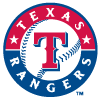 Luke Jackson, RP, Rangers: Manager Bruce Bochy hinted that Jackson would be his closer a few days before Opening Day, and it turns out we should have believed him. Jackson gave up three runs after entering a tie game in the top of the ninth on Opening Day, which could have nudged Bochy to try someone else in the role, but he kept faith in his choice. Jackson earned a save in the Rangers' first win of the year the very next day and earned saves in his next two appearances after that. Chris Martin did pick up a save in the third game of the season, but that came after Jackson had pitched on back-to-back days and doesn't appear to indicate that this is a committee situation.
Luke Jackson, RP, Rangers: Manager Bruce Bochy hinted that Jackson would be his closer a few days before Opening Day, and it turns out we should have believed him. Jackson gave up three runs after entering a tie game in the top of the ninth on Opening Day, which could have nudged Bochy to try someone else in the role, but he kept faith in his choice. Jackson earned a save in the Rangers' first win of the year the very next day and earned saves in his next two appearances after that. Chris Martin did pick up a save in the third game of the season, but that came after Jackson had pitched on back-to-back days and doesn't appear to indicate that this is a committee situation.
While Jackson does appear to have a firm grip on the job at the moment, there's no guarantee he keeps the job all year. He struggled last year, but even if we look at his numbers since the start of the 2023 season, they hardly look closer-worthy and don't compare favorably to Martin's nor to lefty Robert Garcia's, another pitcher fantasy drafters were speculating on:
| Reliever | ERA | WHIP | K% | BB% | GB% | SIERA |
|---|---|---|---|---|---|---|
| Luke Jackson | 4.47 | 1.40 | 26.7% | 11.0% | 50.2% | 3.66 |
| Chris Martin | 2.09 | 1.07 | 26.0% | 3.1% | 48.9% | 2.72 |
| Robert Garcia | 4.01 | 1.20 | 28.2% | 7.9% | 46.4% | 3.12 |
For anyone hoping this is a repeat of last year, when Kirby Yates claimed the job in April and wound up saving 33 games, that seems overly optimistic. Yates is a better pitcher and had more experience in the ninth inning. That said, saves are a short-term game, so Jackson is very much worth a spot on your roster as long as he has the job.
FALLERS
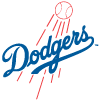 Roki Sasaki, SP, Dodgers: There were worries that Sasaki was being overdrafted, but those were related to his durability. Should a player who topped out at 20 starts and 129.1 innings in 2022 and averaged 16.5 starts and 101 innings in the two years since then really have gone at pick 102 in the Main Event (with a minimum pick of 29!), ahead of proven frontline starters like Freddy Peralta, Luis Castillo, Zac Gallen and Justin Steele? While some adjustment period was expected, there weren't many concerns about his talent, and why would there be, given that he owned a career 2.10 ERA, 0.89 WHIP, 32.7 percent strikeout rate and 5.7 percent walk rate during his time in Japan?
Roki Sasaki, SP, Dodgers: There were worries that Sasaki was being overdrafted, but those were related to his durability. Should a player who topped out at 20 starts and 129.1 innings in 2022 and averaged 16.5 starts and 101 innings in the two years since then really have gone at pick 102 in the Main Event (with a minimum pick of 29!), ahead of proven frontline starters like Freddy Peralta, Luis Castillo, Zac Gallen and Justin Steele? While some adjustment period was expected, there weren't many concerns about his talent, and why would there be, given that he owned a career 2.10 ERA, 0.89 WHIP, 32.7 percent strikeout rate and 5.7 percent walk rate during his time in Japan?
After two starts, maybe it's time to worry about Sasaki's performance as well as his durability. He's only lasted a total of 4.2 innings and has five strikeouts and nine walks, "good" for a 34.6 percent walk rate. Control was never his problem in Japan, so there are two ways to read this. It's possible he'll be fine after he adjusts to a new country and more importantly a new baseball, in which case now is a great time to buy low. It's also possible he's already hurt, as his velocity dropped nearly two mph from his first start to his second.
 Rafael Devers, 3B, Red Sox: Devers finally woke up at the plate in his sixth and seventh games of the year, going 3-for-8 with an RBI double, but that came after he went 0-for-19 with 15 strikeouts in his first five games. A player with a track record as strong as Devers' can certainly shake off a five-game slump and wind up with a line by the end of the season that looks pretty much like you'd expect, but there are real reasons to worry that this is going to be a down year for Devers.
Rafael Devers, 3B, Red Sox: Devers finally woke up at the plate in his sixth and seventh games of the year, going 3-for-8 with an RBI double, but that came after he went 0-for-19 with 15 strikeouts in his first five games. A player with a track record as strong as Devers' can certainly shake off a five-game slump and wind up with a line by the end of the season that looks pretty much like you'd expect, but there are real reasons to worry that this is going to be a down year for Devers.
The primary concern is that he dealt with shoulder troubles throughout last season. While the fact that he nonetheless was able to play 138 games and hit a fairly typical .272/.354/.516 with 28 homers could be interpreted as a sign that the shoulder woes were too minor to worry about, the fact that he showed up to camp still dealing with them should put that idea to bed. While he's allowed to hit, he's yet to play an inning in the field either in spring training or the regular season.
Maybe his early slump is attributable to his delayed start to camp and his struggles to adjust to the designated hitter role. But even in the overly optimistic scenario where his shoulder issues quickly dissipate and we don't hear anything about them for the rest of the season, he'll still be dealing with the DH penalty, an effect which sees players' OPS drop by around 40 points when serving as the DH due to the fact that it's harder to remain in the zone when not playing the field.
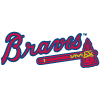 Jurickson Profar, OF, Atlanta: Profar was suspended 80 games Monday after testing positive for chorionic gonadotropin (hCG), a drug commonly used as a masking agent. He'll also be ineligible for the playoffs should Atlanta pull out of its 0-7 tailspin and make the postseason. The suspension offers a nice, clean explanation for his mysterious breakout campaign as a 31-year-old last season. He always had good pitch recognition and good bat-to-ball skills, but he simply didn't hit the ball hard enough to make the most of those tools until last year:
Jurickson Profar, OF, Atlanta: Profar was suspended 80 games Monday after testing positive for chorionic gonadotropin (hCG), a drug commonly used as a masking agent. He'll also be ineligible for the playoffs should Atlanta pull out of its 0-7 tailspin and make the postseason. The suspension offers a nice, clean explanation for his mysterious breakout campaign as a 31-year-old last season. He always had good pitch recognition and good bat-to-ball skills, but he simply didn't hit the ball hard enough to make the most of those tools until last year:
| Year(s) | wRC+ | AVG/OBP/SLG | BABIP | HR/600 PA | K% | BB% | O-Swing% | Z-Contact% | Barrel% | HardHit% | EV (avg) |
|---|---|---|---|---|---|---|---|---|---|---|---|
| 2018-2023 | 97 | .241/.325/.397 | .264 | 15.5 | 15.5% | 9.9% | 25.6% | 88.5% | 4.2% | 31.5% | 86.8 mph |
| 2024 | 139 | .280/.380/.459 | .302 | 21.6 | 15.1% | 11.4% | 22.4% | 89.6% | 7.2% | 44.2% | 91.1 mph |
You can probably attribute some of Profar's success to his improved ability to avoid chasing, but most of his sudden breakout came from the fact that he jumped from having one of the lowest hard-hit rates in the league all the way to having a mark in the 77th percentile. That helped more of his flyballs clear the fence and more of his grounders find a hole, taking him from a below-average hitter to an All-Star.
Profar looked like he was on the way out of the league despite having all the tools except power. Then he added power and signed a $42 million deal — and he'll still take home over $36 million of that even despite being suspended 80 games without pay. Ethical concerns aside, it's not hard to see why he did it.
 David Bednar, RP, Pirates: Bednar's 2024 season did not go at all well, but his 2025 campaign looks like it could be even worse. He dealt with a lat injury in spring training last year and later strained his oblique in June. When he was able to pitch, his numbers looked nothing like they did over the prior three seasons:
David Bednar, RP, Pirates: Bednar's 2024 season did not go at all well, but his 2025 campaign looks like it could be even worse. He dealt with a lat injury in spring training last year and later strained his oblique in June. When he was able to pitch, his numbers looked nothing like they did over the prior three seasons:
| Year(s) | ERA | WHIP | K% | BB% | K-BB% | SIERA |
|---|---|---|---|---|---|---|
| 2021-2023 | 2.25 | 1.06 | 31.2% | 7.7% | 23.5% | 2.94 |
| 2024 | 5.77 | 1.42 | 22.1% | 10.7% | 11.5% | 4.23 |
While the Pirates declined to name Bednar (or anyone else) their closer heading into spring training, they also didn't bring in any obvious alternatives over the winter, leaving Bednar as a reasonable second closer target, on the theory that he had a very real chance of returning to his old self after an offseason of rest.
That hasn't come close to happening. Instead, Bednar made three appearances, allowing at least one run in all three and twice failing to record an out, and then was optioned to Triple-A Indianapolis on Tuesday. Dennis Santana earned the save Wednesday and appears to be the Pirates reliever to pick up. Bednar could still get himself right in the minors and return to spend five-plus months as the team's dedicated closer, but it's difficult to hold onto him given that he hasn't looked like a closer since 2023.









